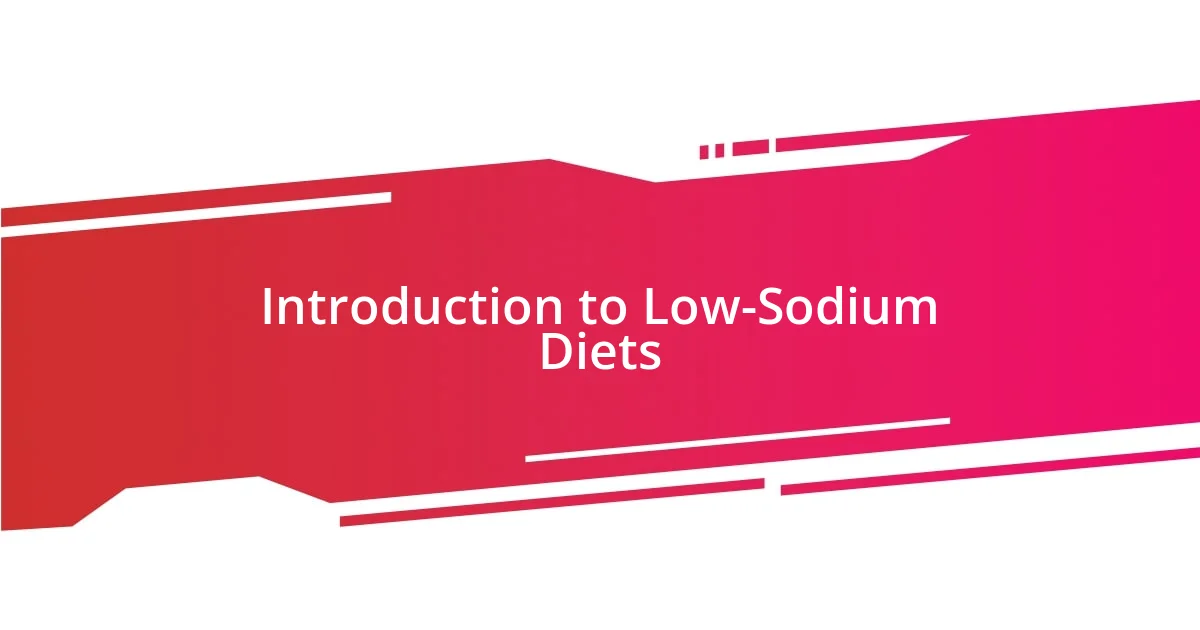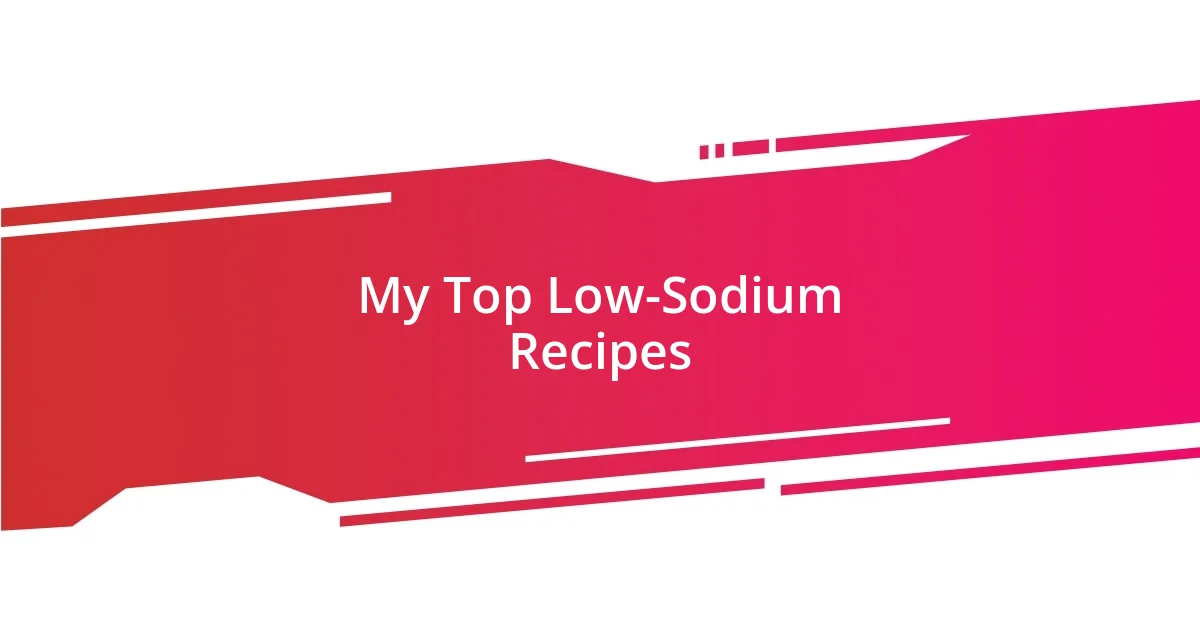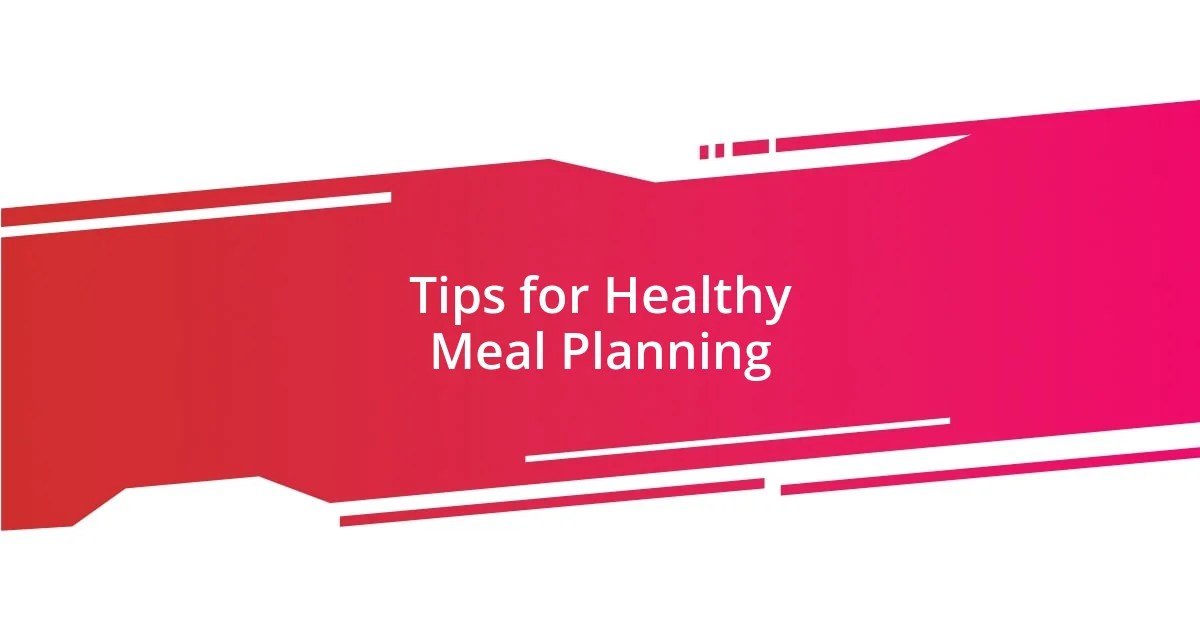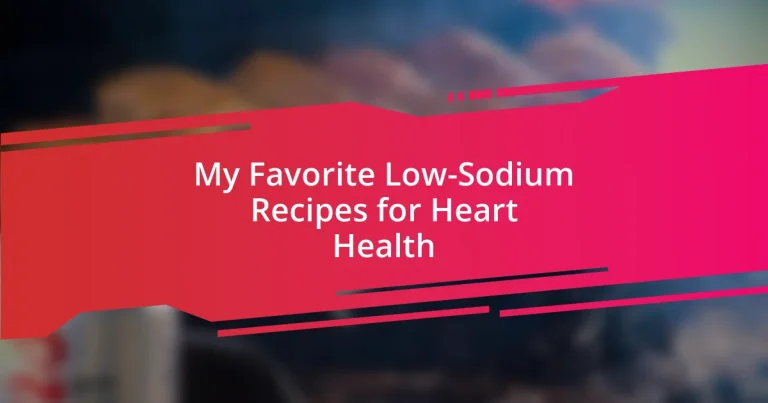Key takeaways:
- A low-sodium diet enhances heart health, reduces bloating, and encourages exploration of natural flavors through herbs and spices.
- Essential heart-healthy ingredients include fatty fish, whole grains, leafy greens, nuts, and berries, each offering unique health benefits.
- Effective cooking techniques and flavor-enhancing substitutes like garlic, smoked paprika, and nutritional yeast can significantly reduce sodium while elevating dish flavors.

Introduction to Low-Sodium Diets
A low-sodium diet focuses on reducing the intake of sodium, which many of us consume in excess, often without realizing it. I remember my own journey exploring the supermarket aisles, astonished at how many foods—like bread and sauces—are loaded with sodium. It makes you wonder, just how much of it are we consuming each day without a second thought?
Cutting back on sodium can significantly enhance heart health, lowering the risk of hypertension and promoting overall wellness. I often reflect on how my energy levels improved when I embraced this lifestyle change. Have you ever felt sluggish after a salty meal? That bloated feeling is a reminder that what we eat directly impacts how we feel.
Starting a low-sodium diet doesn’t mean sacrificing flavor; it simply invites us to explore new ingredients and cooking methods. I’ve discovered that herbs and spices can bring my dishes to life, turning a bland meal into a vibrant experience. Isn’t it exciting to reinvent your favorite recipes with a fresh perspective, all while taking care of your heart?

Benefits of Low-Sodium Cooking
Shifting to low-sodium cooking offers numerous benefits that extend beyond just heart health. Personally, I’ve found that reducing sodium has transformed the way I experience food. By focusing on whole ingredients, I’ve discovered the natural flavors in fruits, vegetables, and grains that I often overlooked before. It’s truly a game changer to appreciate the nuanced taste of a ripe tomato or the sweetness of roasted carrots when salt isn’t dominating the dish.
Here are some key benefits of embracing low-sodium cooking:
- Improved Heart Health: Reducing sodium intake helps lower blood pressure, decreasing the risk of heart disease.
- Decreased Bloating: Cutting back on salt can alleviate that uncomfortable feeling of bloating after meals.
- Enhanced Flavor Exploration: When you limit sodium, you naturally turn to herbs and spices, unlocking a world of flavor in your cooking.
- Better Hydration: With less sodium, your body retains less water, which can lead to increased overall hydration.
- Support for Weight Management: Low-sodium meals can help control appetite and reduce cravings for unhealthy snacks.
In my experience, these benefits not only promote better physical health but also elevate my culinary adventures. Each meal becomes an opportunity to celebrate wholesome, delicious ingredients while making a positive impact on my wellbeing.

Essential Ingredients for Heart Health
Embracing a heart-healthy lifestyle means choosing the right ingredients. For instance, incorporating omega-3 fatty acids from fatty fish like salmon or walnuts has been a game changer for me. I vividly remember the first time I grilled salmon at home; the flavors were rich and satisfying, and I felt good knowing I was doing something beneficial for my heart. Fish not only enhances your meals but also contributes to lower triglyceride levels, a key factor in heart health. Have you tried adding more fish to your diet?
Whole grains are another essential component of a heart-healthy diet. Switching to brown rice and quinoa has opened my eyes to the texture and flavor variations these grains bring to my dishes. I still recall the first time I mixed quinoa into a salad—I was amazed at how filling and hearty it felt. Whole grains support heart health by providing fiber, which helps reduce cholesterol levels and keeps your digestive system on track. It’s fascinating how a simple grain can have such a profound impact on our health!
Now, let’s take a look at a comparison of these heart-healthy ingredients:
| Ingredient | Health Benefits |
|---|---|
| Fatty Fish (e.g., Salmon) | Rich in omega-3 fatty acids; lowers blood pressure |
| Whole Grains (e.g., Quinoa) | High in fiber; supports digestive health |
| Leafy Greens (e.g., Spinach) | Aids in lowering cholesterol; rich in antioxidants |
| Nuts (e.g., Walnuts) | Contains healthy fats; promotes heart health |
| Berries (e.g., Blueberries) | Rich in antioxidants; supports heart function |

Cooking Techniques to Reduce Sodium
Using the right cooking techniques can make a significant difference in reducing sodium levels without sacrificing flavor. One method I’ve found particularly effective is roasting vegetables. When you roast carrots or bell peppers at high heat, their natural sugars caramelize, creating a sweet, deep flavor that makes you forget all about adding salt. Have you ever experienced that sweet aroma filling your kitchen? It’s like an invitation to enjoy the food!
Another technique I swear by is using acid, such as lemon juice or vinegar, to brighten up dishes. A squeeze of fresh lemon on grilled chicken or a splash of balsamic vinegar in a salad can enhance flavors in a way that salt simply cannot. The other day, I squeezed lemon over a simple pasta dish, and that zing completely transformed the meal! It’s amazing how one little trick can add such vibrancy and reduce the need for extra seasoning.
Finally, don’t underestimate the power of herbs and spices. Experimenting with fresh basil, cumin, or smoked paprika has opened new flavor doors for me. I remember the first time I made a herb-infused broth; by blending different herbs together, I created a savory depth that left me craving more. It’s a simple reminder that the right seasoning can create bold flavors, allowing your dishes to shine without relying on sodium. Why not try adding fresh herbs to your next cooking adventure? You might just find a new favorite!

Flavor Enhancing Substitutes for Sodium
When I first discovered the magic of garlic and onion, my meals transformed entirely. There’s something about the aromatic qualities of these two ingredients that adds depth and personality to any dish. For example, when I sauté garlic before tossing it into a vegetable stir-fry, the entire kitchen fills with a comforting scent that makes my mouth water. Isn’t it incredible how a humble bulb can elevate flavors and replace the need for salt?
Another excellent substitute I love to use is smoked paprika. The first time I sprinkled it over roasted chickpeas, I couldn’t believe how that single addition created a rich, smoky flavor that made them irresistible. Not only does smoked paprika provide an amazing taste, but it also brings warmth to dishes that would otherwise feel flat. Have you ever tried using it in salad dressings? It adds a wonderful complexity that makes you forget you’re missing sodium!
Lastly, don’t forget about umami-rich ingredients like mushrooms or nutritional yeast. I recall adding nutritional yeast to a creamy pasta sauce, thinking it wouldn’t make much of a difference. To my surprise, it brought a cheesy, savory note that made the dish feel indulgent without added salt. Isn’t it fascinating how certain ingredients can awaken flavors in our meals? Why not experiment with these substitutes and rediscover how delicious low-sodium cooking can be?

My Top Low-Sodium Recipes
One of my go-to recipes is a zesty lemon herb quinoa salad. The first time I made it, I was surprised at how vibrant the flavors felt. Tossing together cooked quinoa, fresh parsley, diced cucumber, cherry tomatoes, and a generous squeeze of lemon juice transformed my perspective on grain salads. Each bite bursts with freshness and leaves me feeling energized—perfect for a light lunch or picnic.
Another standout I’m fond of is a savory roasted vegetable medley. Just the other day, while prepping dinner, I chopped up sweet potatoes, Brussels sprouts, and red onions, drizzled them with a bit of olive oil, and sprinkled on some garlic powder. I roasted them until golden brown, and let me tell you, the aroma wafting from the oven was pure comfort! They emerged beautifully caramelized, and the flavors combined so wonderfully that I didn’t even think about seasoning them with salt.
Lastly, I’ve grown quite attached to a homemade tomato basil sauce. During my first attempt, I used ripe tomatoes, fresh basil, and a splash of balsamic vinegar, letting it simmer to meld all those delicious flavors. The satisfaction I felt when I tasted it—rich, tangy, and utterly delightful—was profound. I realized then that I could savor pasta night without relying on sodium or store-bought sauces, shifting my perspective on cooking completely. Why not give it a try and see how it transforms your meals?

Tips for Healthy Meal Planning
When I plan my meals for the week, I often start by choosing a protein source that excites me. Once, I marinated chicken in a mixture of citrus juices and herbs, and the result was phenomenal! The vibrant flavors added so much zest to my dishes that I almost forgot about the salt. Have you ever considered how a simple marinade can redefine your main course?
Another tip I swear by is prepping ingredients in advance. One particularly busy week, I cut up a variety of veggies and stored them in the fridge, ready to grab when I needed to throw together a quick dinner. The convenience not only saved time but also made it easy to create balanced meals—each time, I felt so accomplished when dinner was on the table in less than 30 minutes. Isn’t it reassuring to know that a little prep can lead to healthier choices?
Lastly, I’ve found that involving the whole family in meal planning makes it enjoyable and inclusive. There was a time I asked my kids to pick a low-sodium recipe each week, and their enthusiasm sparked new ideas in our kitchen. Their joy in discovering new flavors reminds me how important it is to share healthy cooking as a family. Have you tried engaging your loved ones in the meal planning process? It might just turn your kitchen into a creative hub!














